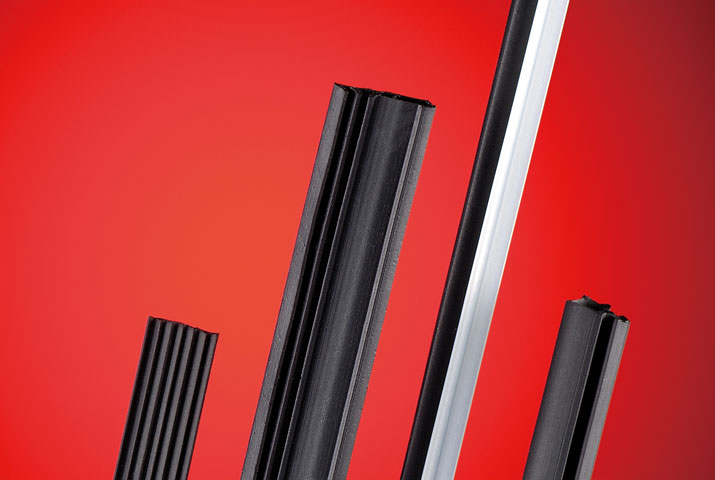- Home
- Blog
- Material & Life
- Compression Set of Thermoplastic Elastomers
Compression Set of Thermoplastic Elastomers
2021-01-13

What is a compression set test?
Compression set is the measure of a material’s ability to return to its original size and shape after being compressed for a specific time and at a specific temperature.Measurement of Compression Set
There are two standard test methods of ASTM D395- Compression Set Under Constant Force in Air as Method A
- Compression Set Under Constant Deflection in Air as Method B
Phon Tech R&D Lab uses Test Method B for measuring static compression sets of PHOENIX thermoplastic elastomers (TPEs). Compression set determined by Test Method B is the difference between the original thickness/height of a specimen and the thickness after testing, as percentage of the original deflection.
Depending on the conditions of expected applications, Phon Tech selects suitable test time and temperature for compression set tests. Generally, the typical values are 22 hours at 23℃ room temperature or at 70℃. First, the thickness of the original specimen is measured. Then, the specimen is placed between spacers and in a compression device. The sample is compressed to 75% of its original thickness for a given period and temperature. After removing the sample from the compression device, the specimen is allowed to cool and relax for 30 minutes. Finally, the after-test thickness of the specimen is measured and its permanent deformation rate is calculated.
What’s the purpose of a compression set test?
Compression set result is expressed as the percentage of the sample that fails to recover from its original thickness/height. Lower percentages indicate materials with better ability to return to its original shape and to seal. For example, an ideal elastic material would have a compression set value of 0%, which means the material can spring back completely to its original thickness/height.Compression set tests are used to observe a material’s performance when it is subjected to compressive load by measuring the rate of deformation throughout the testing period. The data can help us predict the long-term behavior of the material, which should provide sealing function for years or even for decades.
According to our previous experiences, we have found a correlation between compression set value and hardness. A material's compression set links its hardness and composition. Softer materials with better resilience generally have lower compression sets.
Compression set properties are particularly important to sealing applications involving compressive stresses, such as o-rings, gaskets, valves, seals and food packaging, etc. If a sealing item is deformed for a long period and is not able return to its original shape after the removal of the deformation. Its loss ability to recover may cause leakage or even sealing failure. Hence, a material with a low compression set is vital when it comes to sealing applications.
Phon Tech develops PHOENIX Thermoplastic Elastomers (TPEs) with low compression sets that are compliant with food contact regulations. For more information on thermoplastic elastomers with low compression sets, welcome contact Phon Tech!
Article Classification
Recent Articles
- TPE Menstrual Cups: The Future of Sustainable Period Care
- Elevate your cosmetic packaging with PHOENIX TPEs
- Luggage wheels with PHOENIX™ TPE can take you further
- Let our Static Dissipative TPE & Conductive TPE enrich your product design
- Why TPE is the perfect material for your Fish Bait
- TPEs: Ideal Materials for Syringe Gasket Applications
- How does TPEs help you relax from the daily
- Understanding GHG Emission Quantification and Verification
- PHOENIX™ TPEs care about you, because you are our baby.
- GRS & RCS: Certification For Recycled Materials
- PHOENIX Materialize Your Vision for Sustainable Future
- PHOENIX™ Antimicrobial TPEs help you combat bacteria
- To fast display yourself on the PHOENIX™ TPEs material-made product.
- Learn TPE from daily dental care
- TPE - The Small but Important Piece in Bottle Caps
- Life Matters: High-quality PHOENIX™ TPEs for Medical Applications
- The crucial elements in human life
- The indispensable utensils in the KITCHEN
- The recyclability of PHOENIX™ TPEs
- A Peek Into A Ballerina's Dance Bag
- How to discover the Phoenix™ at 2021 Tour De France!?
- TPE: Enjoy cycling with comfort grips
- Your great company during Covid-19 pandemic!!
- TPE: Why Does It Matter To The Hospital Bed Caster
- Compression Set of Thermoplastic Elastomers

